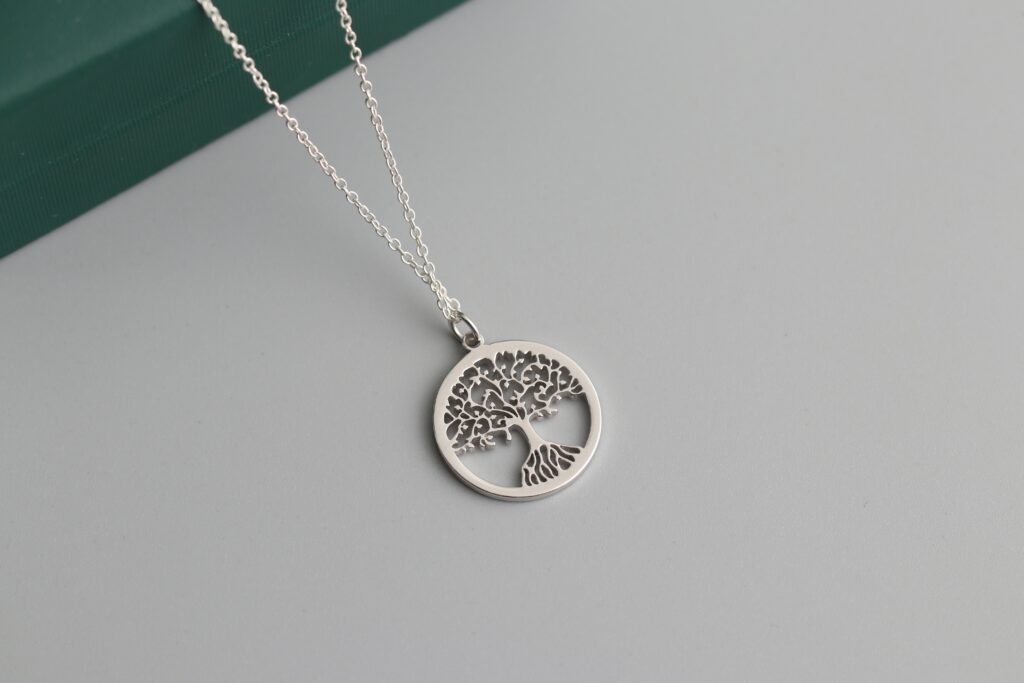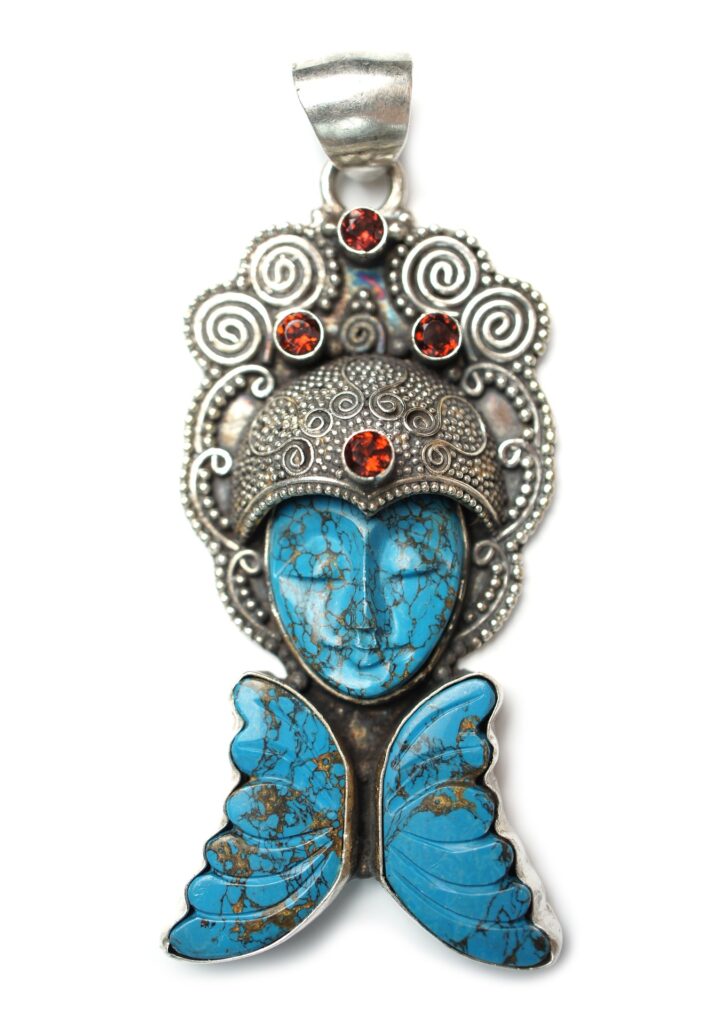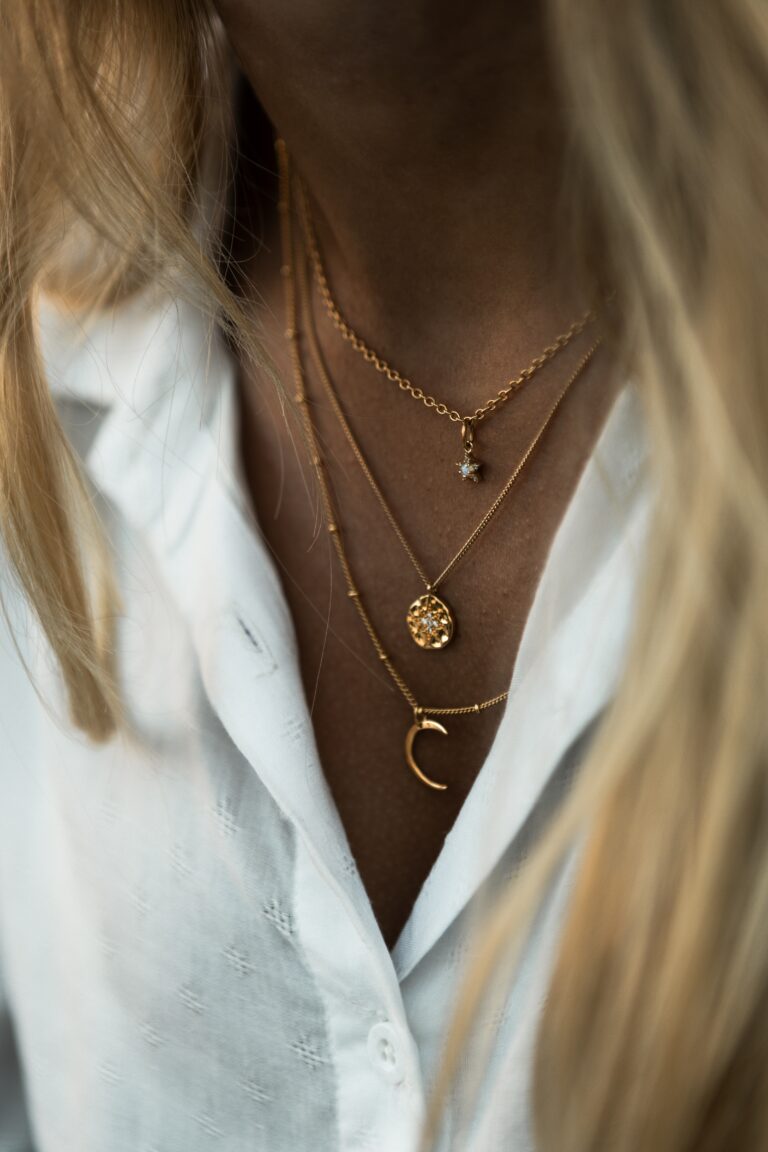Jewelry is a great way to accessorize and complete any outfit. However, there are many different types of jewelry on the market, and many people ask themself, is sterling silver is fake jewelry? This blog post is dedicated to helping you learn how to tell the difference between sterling silver and fake jewelry so that you can make a more informed decision when shopping.
1. Look for hallmarks: Sterling silver is typically marked with a “925” stamp, which means that it contains 92.5% pure silver. This hallmark is usually located on the inside of a ring, bracelet, or necklace chain. If you can’t find the hallmark, the jewelry is likely fake. Fake jewelry may also have a hallmark, but it’s often off-center or blurred.
2. Check for tarnish: Sterling silver naturally tarnishes over time. If you see a piece of jewelry that looks brand new, it’s likely fake. Try rubbing the jewelry with a soft cloth to see if any black marks come off; if they do, it’s most likely sterling silver.
3. Evaluate the weight: Sterling silver is heavier than fake jewelry because it contains more metal. If a piece of jewelry feels lightweight, it’s likely fake. Additionally, fake jewelry may feel hollow because it’s often made with cheaper materials.
4. Conduct a magnet test: If a piece of jewelry is attracted to a magnet, it’s not sterling silver. Silver is not inherently magnetic, so any attraction to a magnet means that the jewelry is fake.
5. Look for discoloration: If a piece of jewelry has a clearly defined boundary where the silver color meets another color, it’s likely fake. Real sterling silver will not have a visible boundary between the metal and any enamel or other materials that are used.

Understanding the Difference Between Sterling Silver and Other Metals
1. Sterling Silver and Pure Silver:
The first thing to understand is that sterling silver isn’t the same as pure silver, which is also known as fine silver. If you still ask yourse, is sterling silver is fake jewelry? then you should know. pure silver is 99.9% silver, while sterling silver is an alloy of silver and other metals, usually copper, making it more durable. Sterling silver has 92.5% silver and 7.5% of other metals, making it a popular choice for jewelry.
2. Sterling Silver and Gold:
Gold is a timeless metal that symbolizes wealth and status. However, it’s also expensive, making it an unaffordable option for some people. Sterling silver, on the other hand, offers a similar look but at a fraction of the cost. Additionally, sterling silver is more durable than gold, making it an ideal option for daily wear jewelry.
3. Sterling Silver and Brass:
Brass is a cheap metal commonly used in making imitation jewelry. Unlike sterling silver, brass is prone to rusting, turning green, or causing allergies when it comes in contact with the skin. Sterling silver, however, is hypoallergenic and doesn’t react with the skin as it’s coated with another metal that helps prevent it from tarnishing.
4. Sterling Silver and Copper:
Copper is a popular metal that’s known for its color and benefits to the body. People wear copper for its health benefits such as reducing inflammation in the body. However, copper can turn skin green when it comes into contact due to oxidation reactions. Sterling silver, on the other hand, doesn’t react with the skin, making it ideal for anyone with sensitive skin.
5. Sterling Silver and Stainless Steel:
Stainless steel is a durable, rust-resistant, and affordable metal that’s commonly used in making jewelry. However, unlike sterling silver, it’s not a precious metal, it’s not hypoallergenic, and it doesn’t have as high a shine or luster. Additionally, stainless steel is harder and can’t be reshaped when it gets damaged.
Silver Tests: How to Know if Your Jewelry is Authentic

1. The Magnet Test
One of the most straightforward tests to check if your sterling silver is fake jewelry is the Magnet test. Real silver is non-magnetic, which means, if your jewelry sticks to the magnet, it is not genuine. Though this test isn’t conclusive, it can be a good starting point.
2. The Nitric Acid Test
The Nitric acid test is one of the tests that jewelers use to confirm their silver’s authenticity. This test can be conducted at home as well. Scratch the silver piece on an unexposed surface and put a small drop of nitric acid on it. If the surface turns gray, then the silver’s authenticity is confirmed.
3. The Scratch Test
The scratch test is another test that can help identify genuine silver. All you need is a metal file and a high-magnification lens. Scratch the silver’s surface using a metal file and examine the scratched area using a magnifying lens. If the scratch is white, then it is not genuine silver.
4. Hallmark Testing
One of the most common tests that individuals use to check for silver authenticity is the hallmark test. Hallmarks are symbols or numbers stamped on silver jewelry to indicate their origin or purity. You can check your silver’s hallmark using a magnifying glass. If the hallmark is intact, then your silver jewelry is genuine.
5. The Ice Cube Test
The Ice Cube test is another easy and quick test that can help identify authentic silver. All you need to do is put an ice cube on the surface of the silver jewelry. If the ice melts quickly, then it is not a genuine silver piece. But, if the ice cube takes some time to melt, then you can rest assured that your jewelry is made from genuine silver.
The Ultimate Guide to Caring for Your Sterling Silver Jewelry
1. Store your jewelry properly
One of the main causes of tarnishing is exposure to air and moisture, so proper storage is crucial. When not in use, store your sterling silver jewelry in a cool, dry place, away from sunlight and other sources of heat. You can also place them in an air-tight container or a zip-lock bag with a piece of anti-tarnish paper or cloth to absorb moisture and prevent tarnishing. Avoid storing your jewelry in plastic bags or containers as they can cause discoloration and tarnish.
2. Clean your jewelry regularly
Regular cleaning can help keep your sterling silver jewelry looking shiny and new. To clean your jewelry, simply use a soft cloth or a microfiber towel to gently wipe off any dirt or grime that may have accumulated on the surface. You can also use mild soap and warm water to clean your jewelry, but avoid using harsh chemicals, abrasive cleaners, or silver dips as they can damage the silver and remove its natural shine.
3. Avoid exposing your jewelry to certain substances
Contact with certain substances can cause damage to your sterling silver jewelry. Avoid exposing your jewelry to perfume, hairspray, lotions, and other chemicals as they can tarnish the silver and cause discoloration. Also, take off your jewelry when engaging in activities such as swimming, showering, or exercising, as they can expose your jewelry to moisture, sweat, and chlorine, which can cause tarnish, corrosion, and discoloration.
4. Polish your jewelry
Over time, your sterling silver jewelry may lose its shine, and polishing can help restore it. There are various ways of polishing your jewelry like using a polishing cloth, a jewelry cleaner specially designed for sterling silver, or a DIY cleaning solution made with baking soda and water, vinegar and baking soda, or lemon juice and salt. When polishing, be gentle and avoid over-polishing as it can damage the silver layer and remove its natural shine.
5. Get professional cleaning
If your jewelry is badly tarnished or has some scratches, it might be time to take it for professional cleaning. A professional jeweler can help clean and restore your jewelry to its original condition, remove scratches and repair any damages. While this may seem costly, proper care and maintenance can help prevent the need for frequent professional cleaning.


